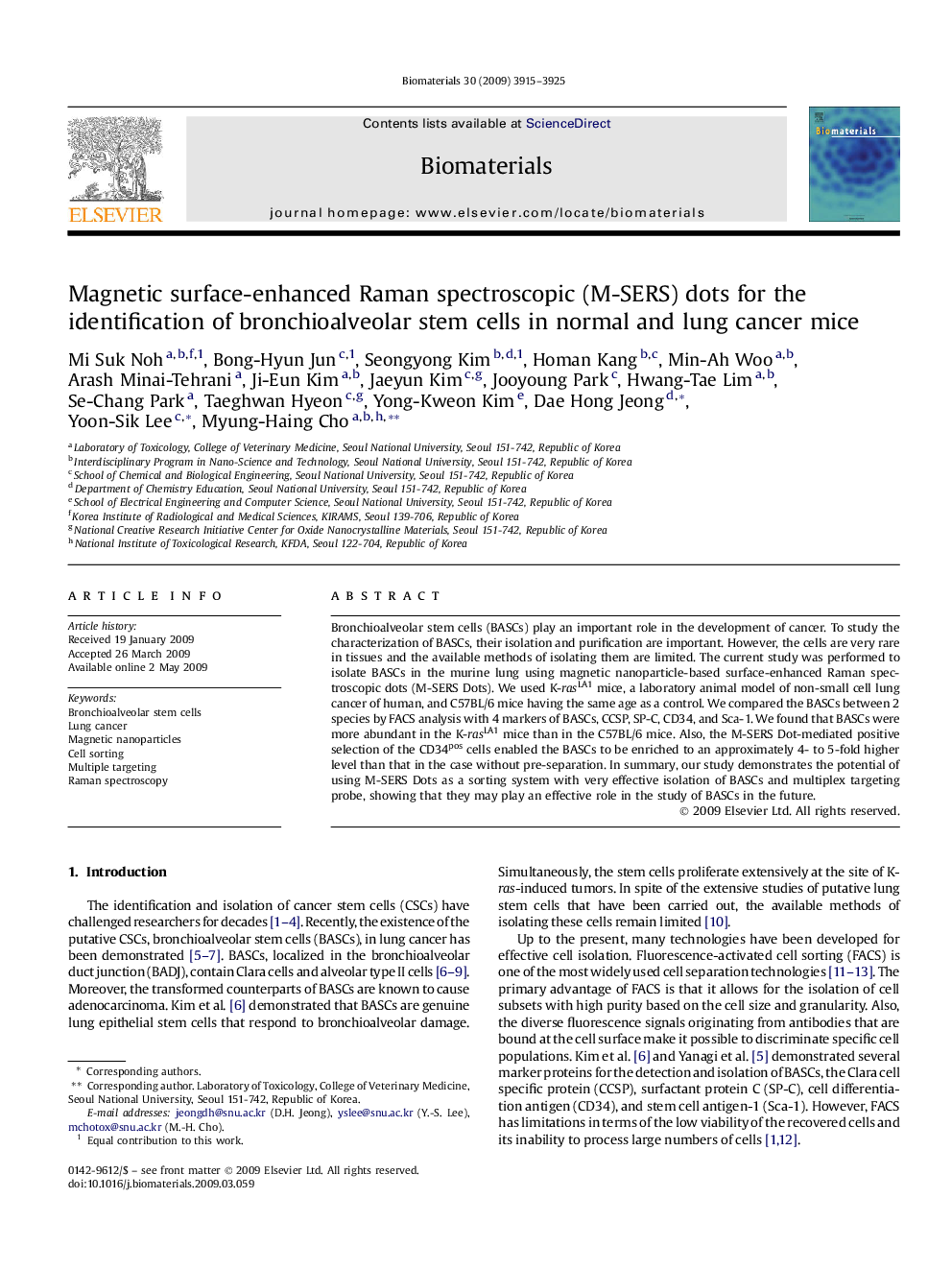| Article ID | Journal | Published Year | Pages | File Type |
|---|---|---|---|---|
| 8796 | Biomaterials | 2009 | 11 Pages |
Bronchioalveolar stem cells (BASCs) play an important role in the development of cancer. To study the characterization of BASCs, their isolation and purification are important. However, the cells are very rare in tissues and the available methods of isolating them are limited. The current study was performed to isolate BASCs in the murine lung using magnetic nanoparticle-based surface-enhanced Raman spectroscopic dots (M-SERS Dots). We used K-rasLA1 mice, a laboratory animal model of non-small cell lung cancer of human, and C57BL/6 mice having the same age as a control. We compared the BASCs between 2 species by FACS analysis with 4 markers of BASCs, CCSP, SP-C, CD34, and Sca-1. We found that BASCs were more abundant in the K-rasLA1 mice than in the C57BL/6 mice. Also, the M-SERS Dot-mediated positive selection of the CD34pos cells enabled the BASCs to be enriched to an approximately 4- to 5-fold higher level than that in the case without pre-separation. In summary, our study demonstrates the potential of using M-SERS Dots as a sorting system with very effective isolation of BASCs and multiplex targeting probe, showing that they may play an effective role in the study of BASCs in the future.
